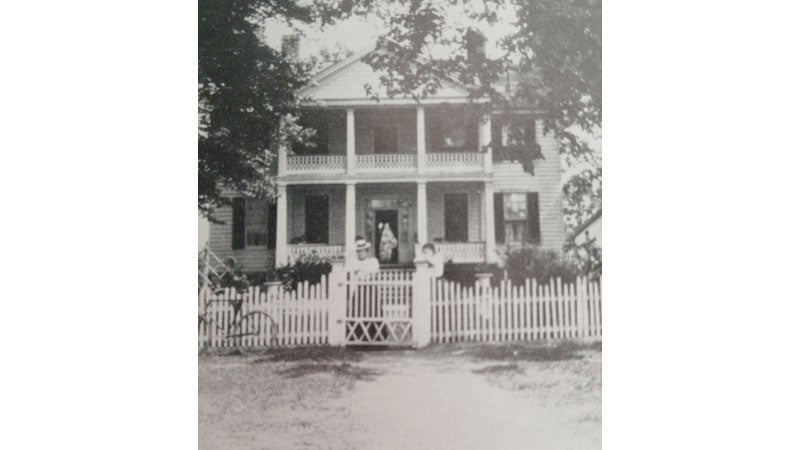LOOKING BACK: Bogart-Barrett House
Published 5:26 pm Tuesday, April 23, 2024

- The Bogart-Barrett House was demolished in 1962 and the surrounding property was developed as Franklin’s first shopping center. (Photo submitted by Clyde Parker)
|
Getting your Trinity Audio player ready...
|
Situated in Southampton County, on the Blackwater River, twelve miles from its mouth at the point where it joins the Nottoway River, in the 1840s, there was a farm owned by John B. Jenkins. In 1847, Richard Barrett married Mary Murfee, purchased the farm from Jenkins, and made their home in a small dwelling on the property. Later, their son, T.O. Barrett, owned the property.
At the time of the purchase of the farm, aforementioned, and its occupation by Richard Barrett and his wife Mary, the county road extended from South Quay, on the Blackwater River, to the point of intersection at what is now Hall Street and, following the course now known as South Street, led directly to the Blackwater River near the Barrett residence. Making a turn at that point, the road continued in an easterly direction, following the bank of the river to the bridge which spanned the Blackwater River, about a half mile upstream, into Isle of Wight County.
Directly in front of the Barrett property, a branch of the road took a northwesterly course, which later became known as South Main Street, and went across the railroad track near where, later, the C. A. Cutchins and Son feed and seed store was located. Across Main Street, to the east, was another elongated building used as a warehouse paralleling the railroad. The road went on across the area that became the future village of Franklin by way of the present-day Clay Street and through what is now Hunterdale to Jerusalem (Courtland), the county seat of Southampton County.
The Barrett property was conveyed to and owned by W.O. Bogart sometime later.
In 1848, William Murfee purchased a parcel of land from the Bogart property and erected thereon a large and, for that day, a commodious dwelling. Murfee was reportedly and generally believed to be engaged to a young lady of Southampton County; however, soon after the completion of the residence, he took an unexpected and somewhat hasty departure and never returned – caused, as was thought at the time, by a change of mind on the young lady’s part. After correspondence with a friend in the neighborhood, Murphy arranged for the sale of the property. Alexander William Norfleet, for a short period of time, occupied the house. Then, W.O. Bogart regained ownership of the Murfee portion of the property; the house was enlarged and was used as Bogart’s residence.
At about the same time, Robert Edwards built a residence and moved into the village with his bride – near the Bogart property. Mr. Edwards used the upper floor of that house as his living quarters; the entire lower part of the house was used as a store, with a warehouse across the road on South Street — the spot then occupied by the residence of R.C. Campbell. Later, the store was converted into a handsome residence and occupied by L.Y. Holloman. He was the first stationmaster or agent for the Seaboard Railroad at Franklin Depot, which position he filled with credit until he died in about 1854. Because of the proximity of his home to the Blackwater River, which was subject to overflow at any time, he was buried at a spot immediately in the rear of the garden of the W.O. Bogart residence. The grave was marked only by a dense growth of bushes and vines, perhaps twenty feet square, and shared by two or three elm trees.
In the fields bordering the river, back of the Bogart home, in those early days, there lived an old man by the name of John R. Williams (“Choctaw” Williams), who apparently had some sort of trading post there. He was buried in an old graveyard somewhere in the back of the old Bogart home.
In 1962, the Bogart – Barrett House was razed, and the surrounding property was developed as one of Franklin’s first shopping centers – containing a Bel-Lo supermarket, several other retail businesses, and the broadcast studio for WYSR Radio station.
In September 1999, during the flooding of downtown Franklin, the former Be-Lo shopping center was heavily damaged and did not return to operation.
SOURCE: Crawford Barrett manuscript — written in 1922 – researched and certified by John Crump Parker in 1955.
CLYDE PARKER is a retired human resources manager for the former Franklin Equipment Co. and a member of the Southampton County Historical Society. His email address is magnolia101@charter.net.





